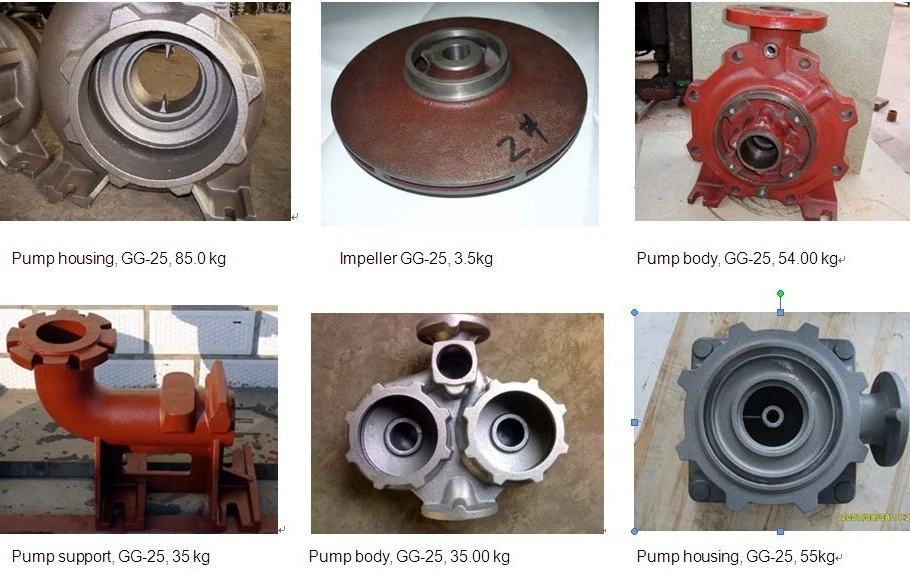Mobile:+86-311-808-126-83
Email:info@ydcastings.com
Understanding the Meaning and Process of Die Casting in Manufacturing
What Does Die Casting Mean?
Die casting is a manufacturing process used to produce metal parts by forcing molten metal into a mold cavity under high pressure. This technique is primarily utilized for producing parts with complex shapes and tight tolerances, making it a favored choice in various industries such as automotive, aerospace, electronics, and consumer goods.
The die casting process begins with the creation of a die, which is essentially a mold that dictates the shape of the final product. These dies are typically made of high-quality steel to withstand the intense pressures and temperatures involved in the casting process. There are two primary types of die casting hot chamber die casting and cold chamber die casting, each suited for different types of metals and applications.
Hot Chamber Die Casting
In hot chamber die casting, molten metal is drawn into a chamber that is heated, reducing the viscosity of the metal. This method is particularly effective for zinc, lead, and tin alloys, which have lower melting points. The machinery uses a piston mechanism to inject the molten metal into the die under high pressure. This rapid and efficient method allows for high production rates and excellent surface finishes, making it ideal for producing intricate components in high volumes.
Cold Chamber Die Casting
On the other hand, cold chamber die casting is used for metals with higher melting points, such as aluminum and magnesium. In this method, the molten metal is poured into a chamber that is separate from the die, and then a piston forces it into the mold. This process minimizes the risk of contamination from the hot chamber, ensuring a cleaner product. Although cold chamber die casting might have a slightly slower production rate compared to its hot chamber counterpart, it is essential for manufacturing parts that require superior mechanical properties and durability.
Advantages of Die Casting
what does die casting mean

Die casting offers numerous advantages, making it a preferred manufacturing method for many industries. One of the significant benefits is the high dimensional accuracy it provides. Parts produced through die casting can achieve tolerances of ±0.1 mm, which is crucial for applications requiring precise fit and function. Additionally, the smooth surface finish that results from the die casting process often eliminates the need for additional machining, thereby reducing manufacturing costs and time.
Another advantage is the ability to produce thin-walled sections, which is particularly beneficial in the automotive and aerospace industries where weight reduction is critical for enhancing fuel efficiency. Furthermore, die casting allows for a high level of design flexibility, enabling manufacturers to create intricate shapes and complex geometries that would be difficult or impossible to achieve with other manufacturing methods.
Limitations of Die Casting
Despite its many benefits, die casting also has limitations. The initial cost of creating the die can be substantial, particularly for low-volume production runs. This makes die casting less economically viable for small production quantities. Additionally, some materials may not be suitable for die casting due to their high melting points or reactivity, limiting the range of metals that can be used.
Moreover, while die casting produces parts with excellent surface finishes, it may not be suitable for applications requiring extreme precision and fine details, especially in industries like medical devices or aerospace components where tolerances are incredibly strict.
Conclusion
In conclusion, die casting is a highly efficient and versatile manufacturing process that plays a crucial role in producing metal parts across various industries. With its ability to create complex shapes with high accuracy and surface quality, it remains a popular choice for manufacturers looking to optimize production efficiency and reduce costs. While there are limitations associated with the initial investment and material selection, the advantages offered by die casting often outweigh the drawbacks, making it a valuable process in modern manufacturing. Whether for automotive components, electronic housings, or intricate machinery parts, die casting continues to be an essential technique in the world of industrial production.
-
Why Should You Invest in Superior Pump Castings for Your Equipment?NewsJun.09,2025
-
Unlock Performance Potential with Stainless Impellers and Aluminum End CapsNewsJun.09,2025
-
Revolutionize Your Machinery with Superior Cast Iron and Aluminum ComponentsNewsJun.09,2025
-
Revolutionize Fluid Dynamics with Premium Pump ComponentsNewsJun.09,2025
-
Optimizing Industrial Systems with Essential Valve ComponentsNewsJun.09,2025
-
Elevate Grid Efficiency with High-Precision Power CastingsNewsJun.09,2025











